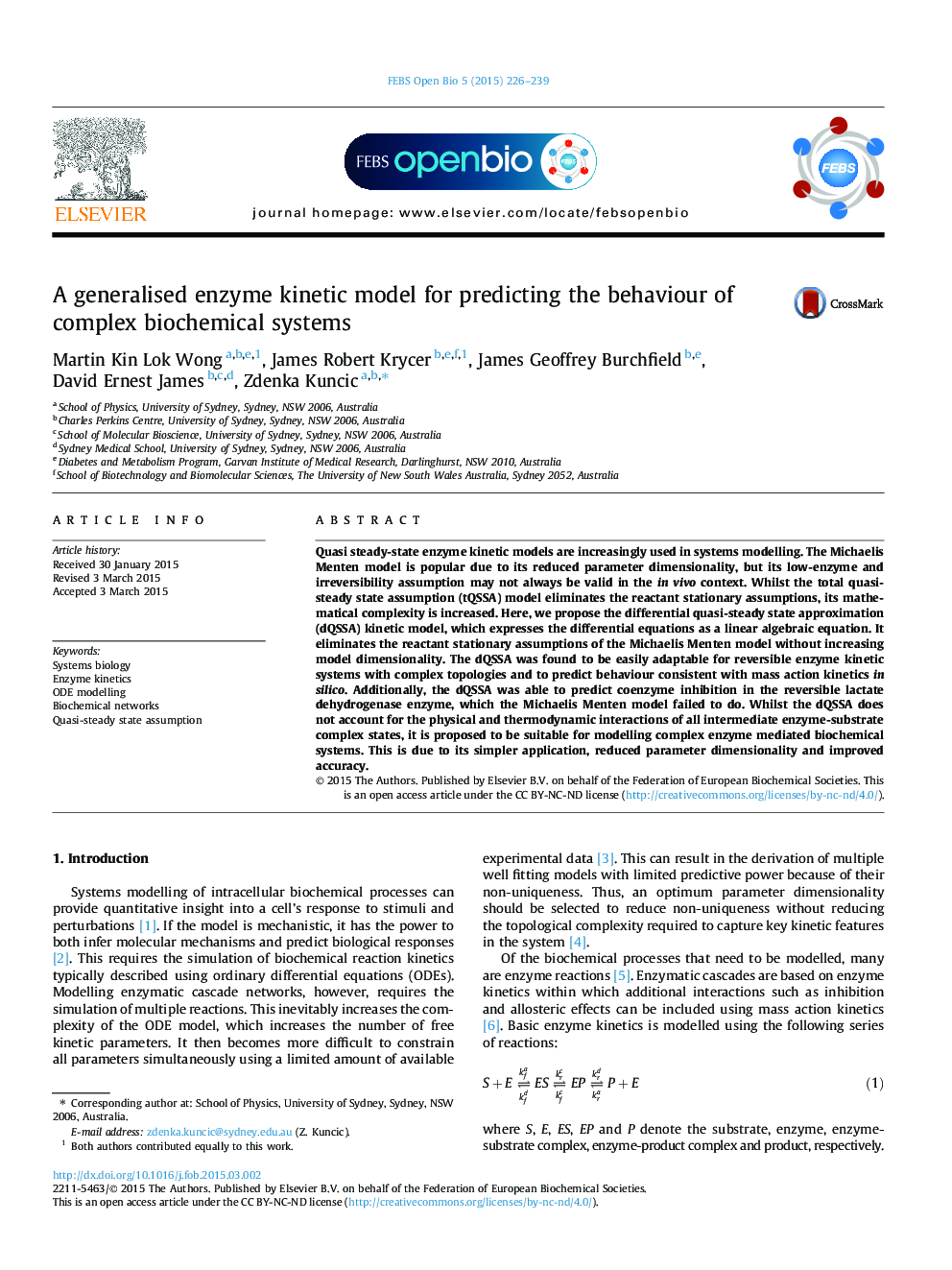| Article ID | Journal | Published Year | Pages | File Type |
|---|---|---|---|---|
| 1981579 | FEBS Open Bio | 2015 | 14 Pages |
•We propose the dQSSA model as a novel way of modelling complex biological networks.•No low enzyme concentration assumption, covering more biological settings.•Reduces the number of parameters, which simplifies optimisation.•dQSSA was validated both in silico and in vitro.•Both biochemical and signalling pathways can be modelled accurately and simply.
Quasi steady-state enzyme kinetic models are increasingly used in systems modelling. The Michaelis Menten model is popular due to its reduced parameter dimensionality, but its low-enzyme and irreversibility assumption may not always be valid in the in vivo context. Whilst the total quasi-steady state assumption (tQSSA) model eliminates the reactant stationary assumptions, its mathematical complexity is increased. Here, we propose the differential quasi-steady state approximation (dQSSA) kinetic model, which expresses the differential equations as a linear algebraic equation. It eliminates the reactant stationary assumptions of the Michaelis Menten model without increasing model dimensionality. The dQSSA was found to be easily adaptable for reversible enzyme kinetic systems with complex topologies and to predict behaviour consistent with mass action kinetics in silico. Additionally, the dQSSA was able to predict coenzyme inhibition in the reversible lactate dehydrogenase enzyme, which the Michaelis Menten model failed to do. Whilst the dQSSA does not account for the physical and thermodynamic interactions of all intermediate enzyme-substrate complex states, it is proposed to be suitable for modelling complex enzyme mediated biochemical systems. This is due to its simpler application, reduced parameter dimensionality and improved accuracy.
Graphical abstractFigure optionsDownload full-size imageDownload as PowerPoint slide
